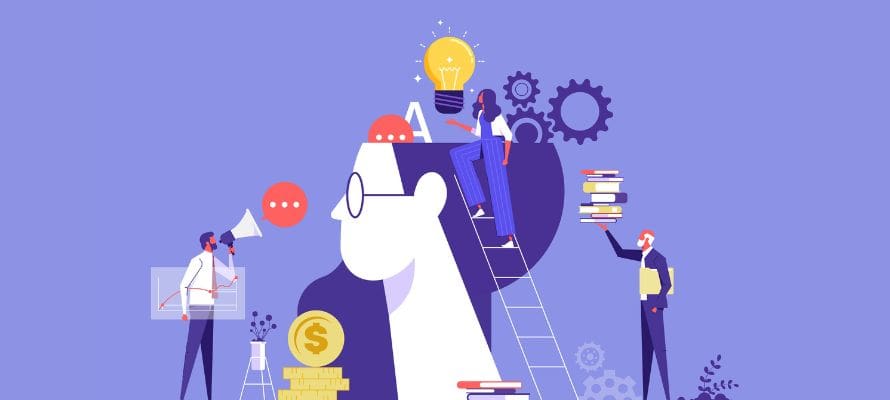
Creating a great employee experience is an art—often called employee experience design. Creating a great work environment requires thoughtful research and a community coming together to maintain over time. Keep reading for my best tips and advice for getting EX right.
To understand employee experience design, you have to start by understanding what “employee experience” is.
Employee experience is the overall experience an employee has at a company, spanning from the hiring process all the way to the exit interview. Often, EX is impacted by someone’s interactions with your brand even before they were hired.
So, employee experience design is the process of creating a strategy for crafting positive interactions and meaningful experiences for employees throughout their journey with your organization. EX design keeps in mind that every employee’s experience can be impacted by their role, seniority level, and working location. The best design systems take the cultural and technological factors into account and adapt EX for each audience segment.
Therefore, the goal is to align employee needs, expectations, and values with the company’s culture and objectives, resulting in improved engagement, satisfaction, and overall performance.
Employee experience design is a continuous process. It’s not a strategy you pen once, roll out, and then move on from. You have to work on creating your desired workplace environment and experience every day.
So, how do you design an experience? Follow these steps:
Understanding why employee experience is important is a simple equation that anyone can relate to.
If your work environment is hostile or unsupportive or unfair, would you choose to keep working there? Odds are, probably not.
A great employee experience is when you have the tools you need. You feel valued and trusted. Communication is clear and transparent. Everyone believes in the mission. You feel a sense of belonging and acceptance.
When all those things line up, innovation and productivity can thrive. Retention goes up, and so does employee wellbeing.
Just knowing that you want a great experience is one thing. Envisioning what it should be at your specific company for all of your employee segments is another matter.
But actually creating a great work environment starts with a clear vision.
Often a great employee experience includes:
We could list a lot of other things that make working somewhere positive. And while you can’t always control everything—like everyone’s actions—you can ensure that all systems, processes, and tools are in place to optimize the employee experience as much as possible.
One of the biggest challenges with EX design is knowing what people really want.
Take our example of providing adequate benefits to employees. How do you know what employees will feel is adequate? You might put together what you think is a great benefits package, but maybe it misses the mark for certain groups.
The same goes for communication. You might train your executive team on communication skills and create a great executive communication plan. But without collecting feedback from employees and targeting their messages properly, you still might fall short.
The best way to solve for this is to regularly conduct empathy work, culminating in empathy maps.
An empathy map is a tool used to gain a deeper understanding of a specific group by visually showing the thoughts, feelings, needs, and behaviors of individuals within that group.
[optin-monster slug=”fp8hmkozpb8bu3ml5hm0″ followrules=”true”]
You can use empathy maps any time you have a major change or initiative and need to understand how each employee group will be impacted. So, you can also use this tool to more intimately understand what each segment wants out of their workplace experience.
For instance, your frontline workers are going to want different things than your remote teams. And both groups are going to need something different than office staff. Using this tool can help you truly understand these nuances without making assumptions.
Designing and creating your employee experience truly takes a village. It’s a company-wide effort and every single member of your organization needs to play their part. That includes:
I recommend putting together a cross-functional task force to regularly meet and discuss your employee experience design and progress.
Once you have planned your employee experience design, you’ll need the right tools to support your vision. To find the right tools and channels:
Remember that employee experience tools are enablers, not solutions in themselves. The success of these tools relies on how effectively they are integrated into your overall employee experience strategy.
By carefully considering these factors and involving key stakeholders in the decision-making process, you can find tools that amplify your efforts to create a more engaging, fulfilling, and productive work environment.
Sydney Lauro is the Demand Generation Manager for theEMPLOYEEapp. Prior to joining the team at theEMPLOYEEapp, Sydney worked in internal communications for Chipotle Mexican Grill. She uses her internal comms expertise and passion for improving communication and the employee experience to create content and share best practices to help other communications professionals.
[optin-monster slug=”gqorn0natkqgyrtjvr6i” followrules=”true”]